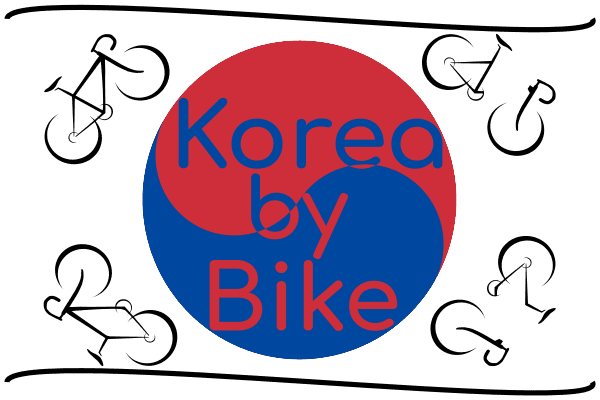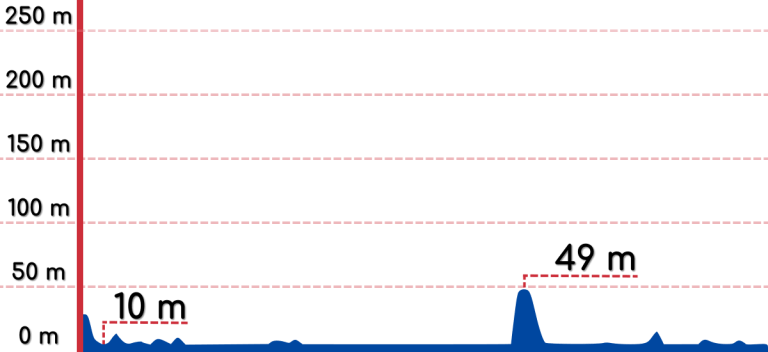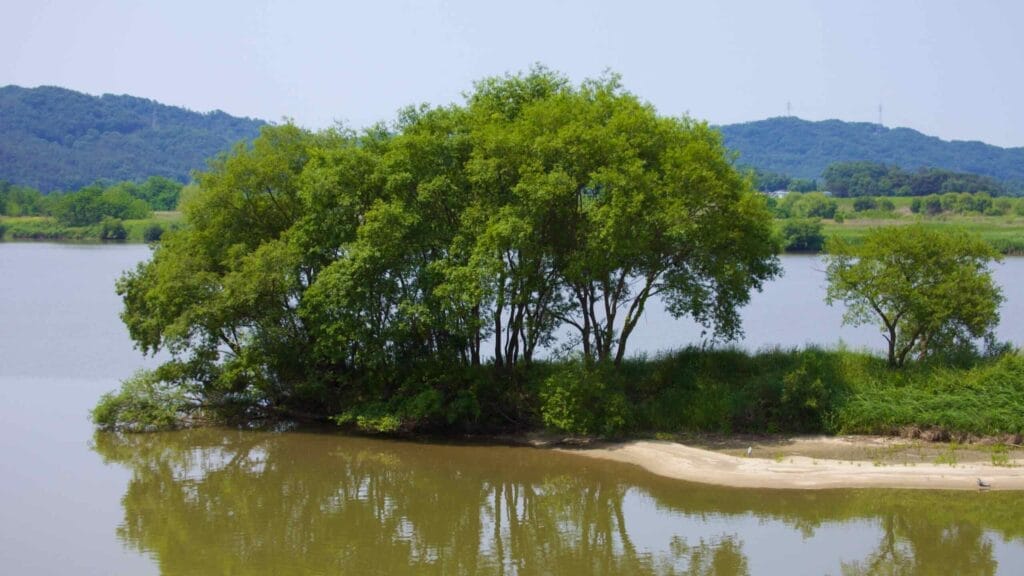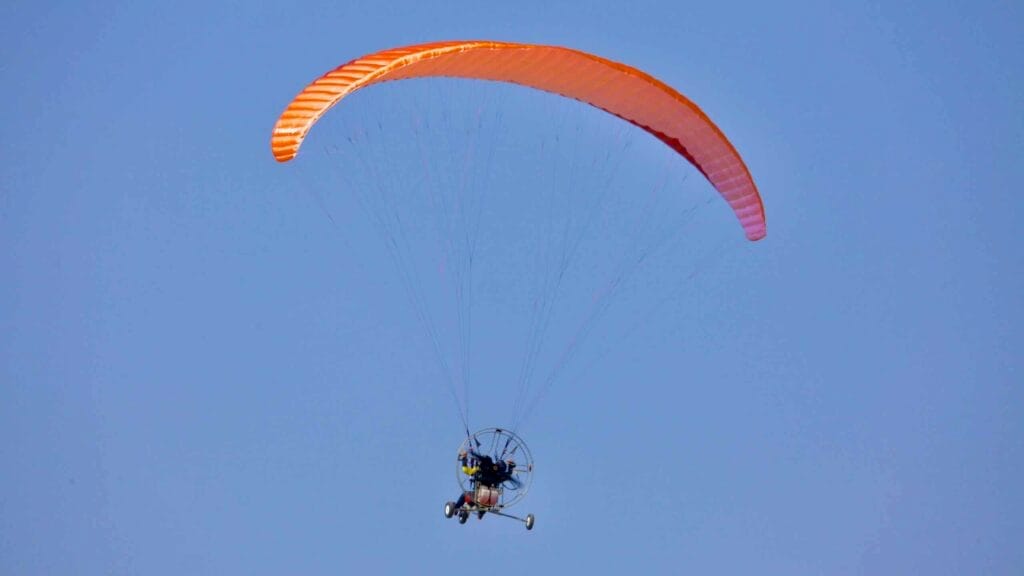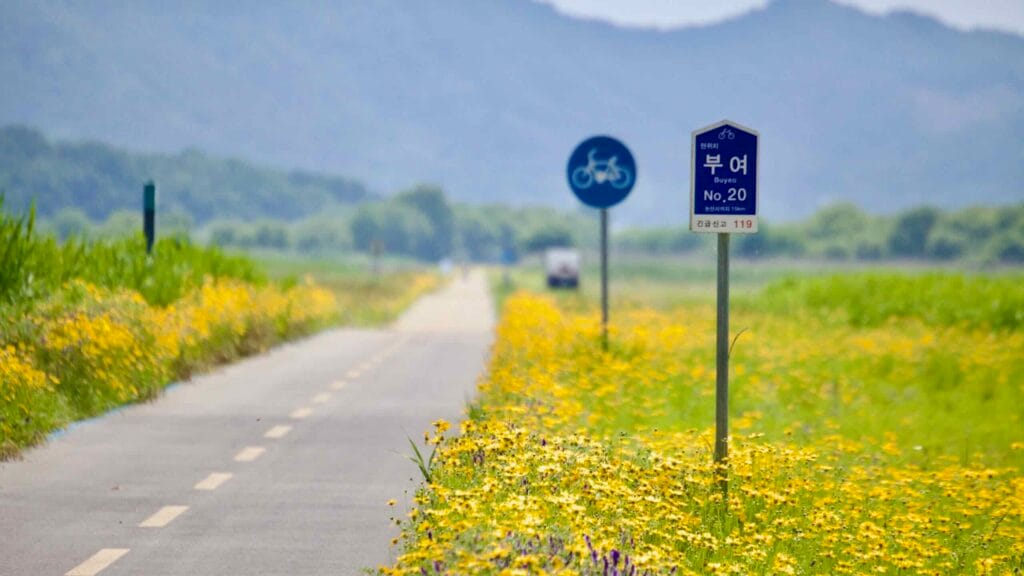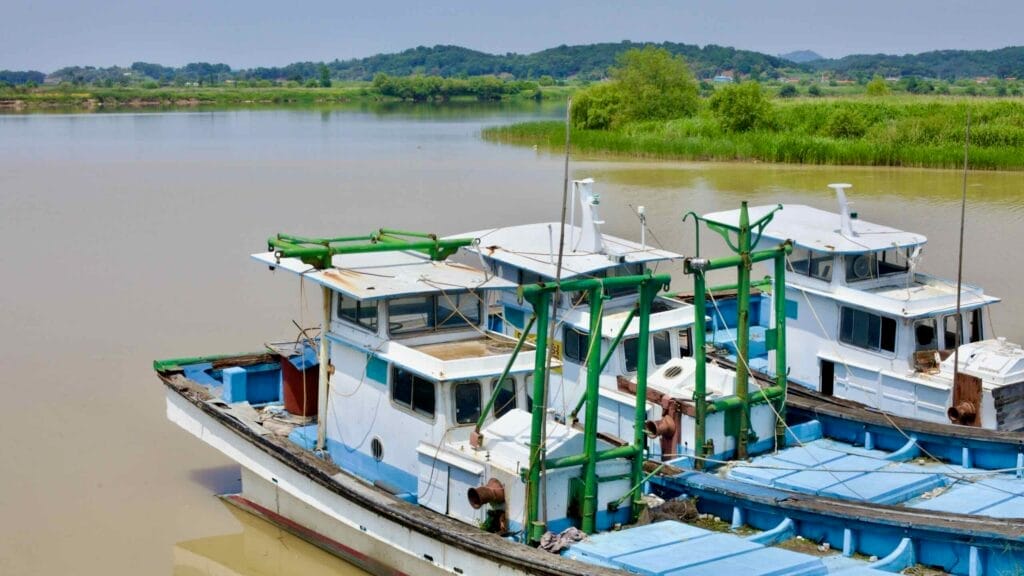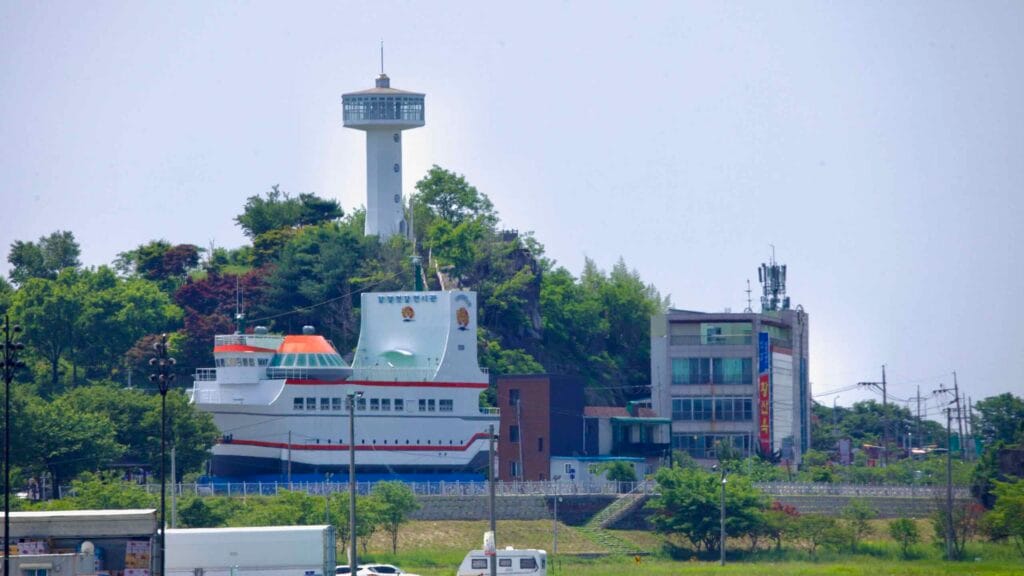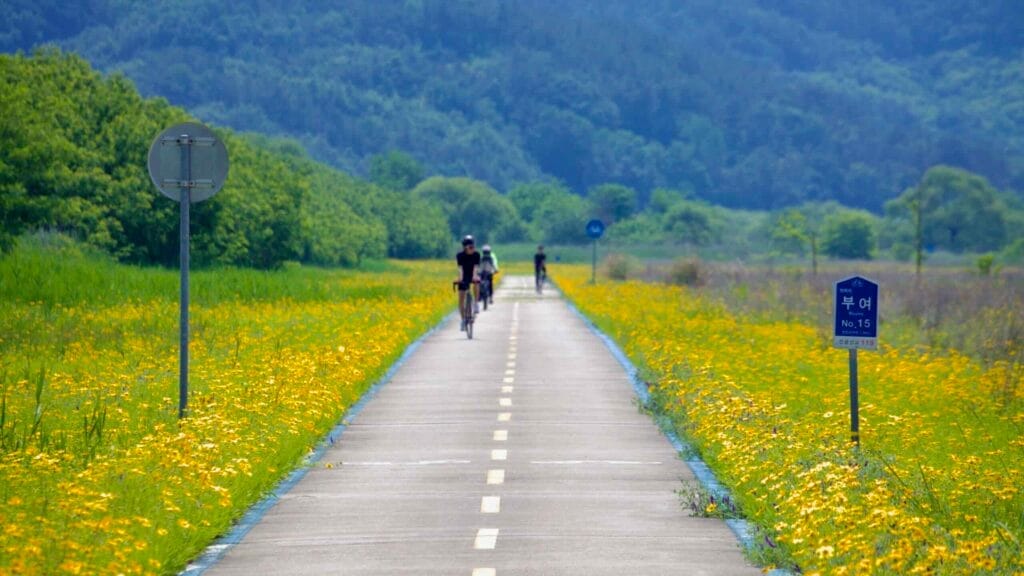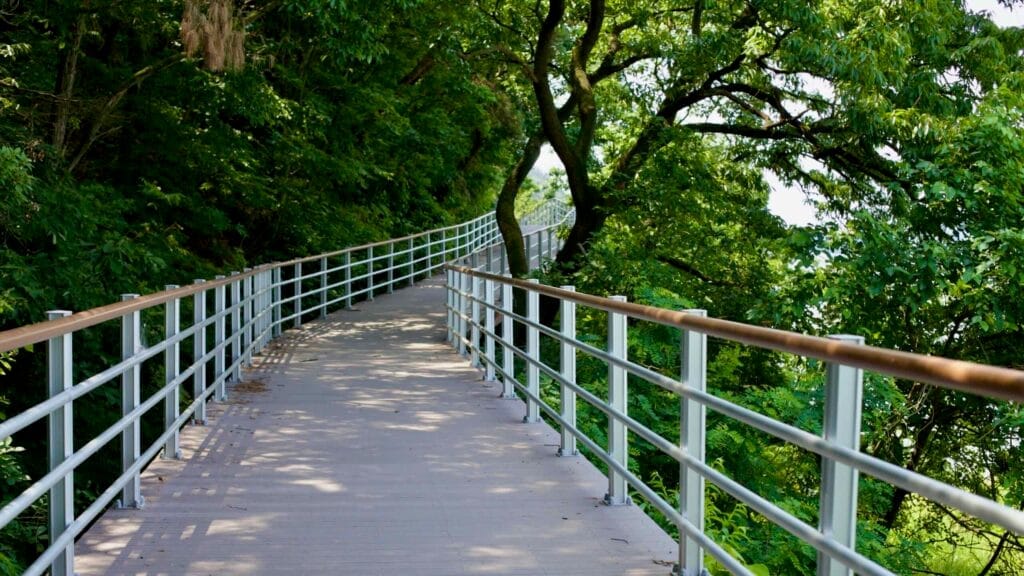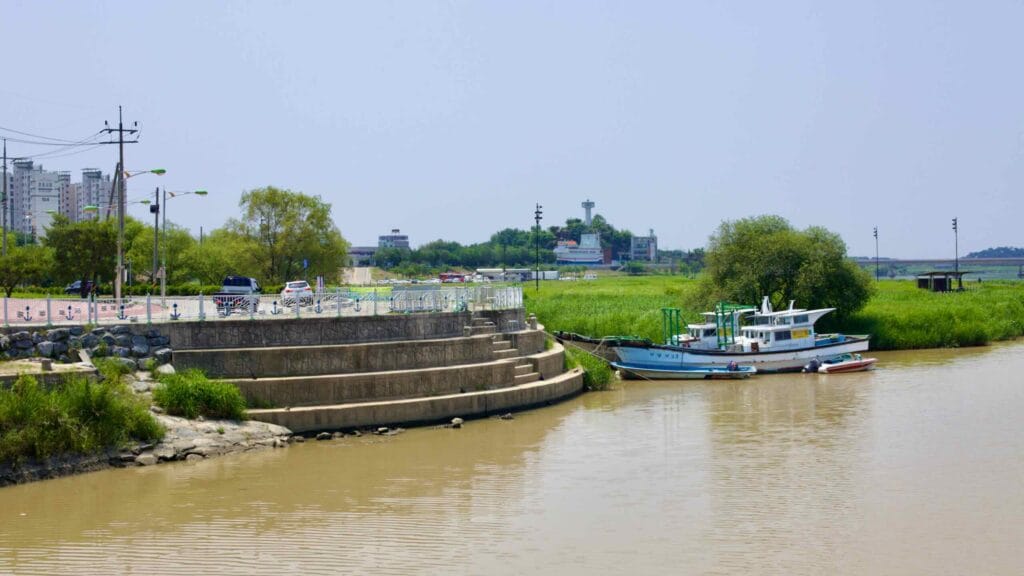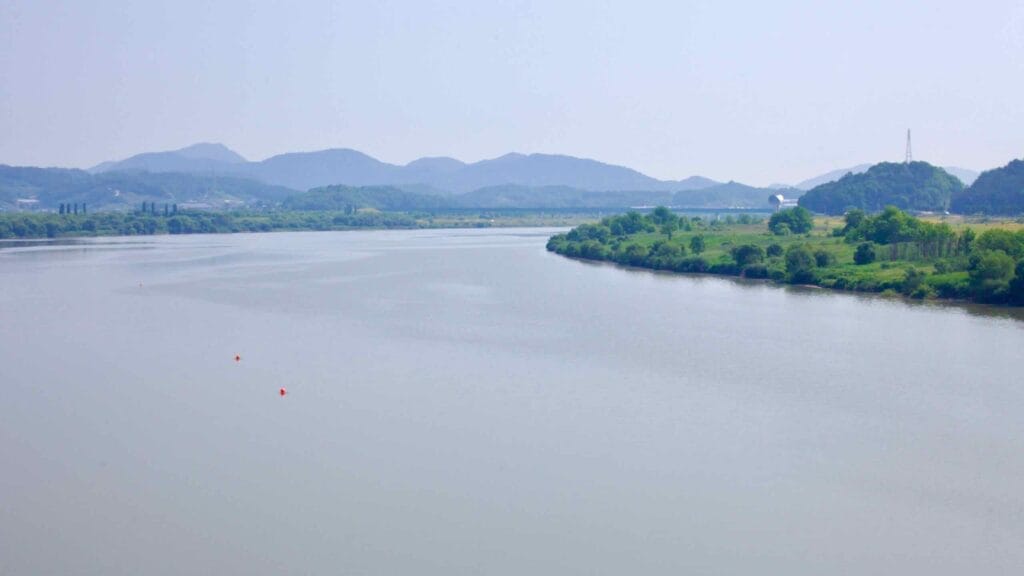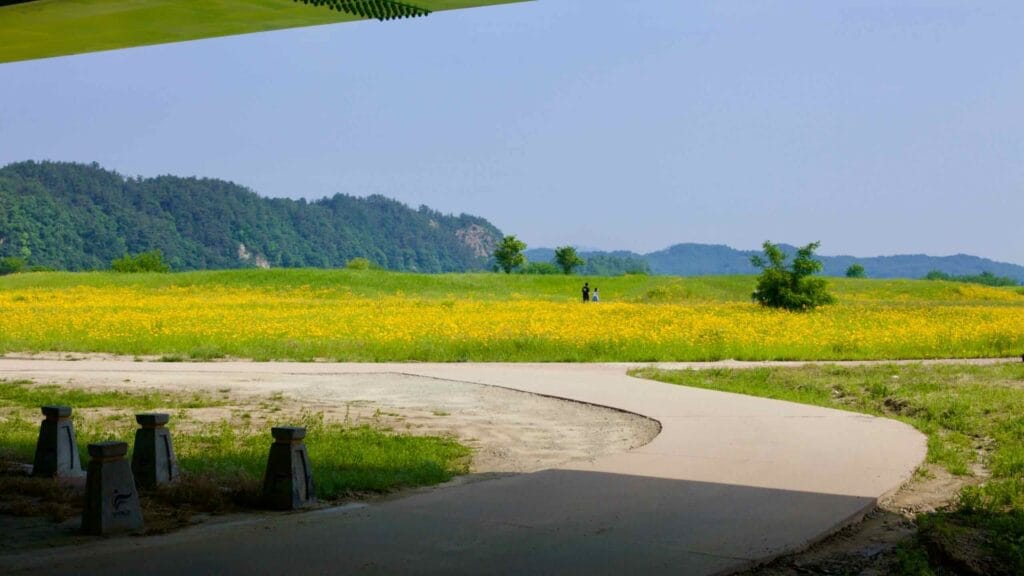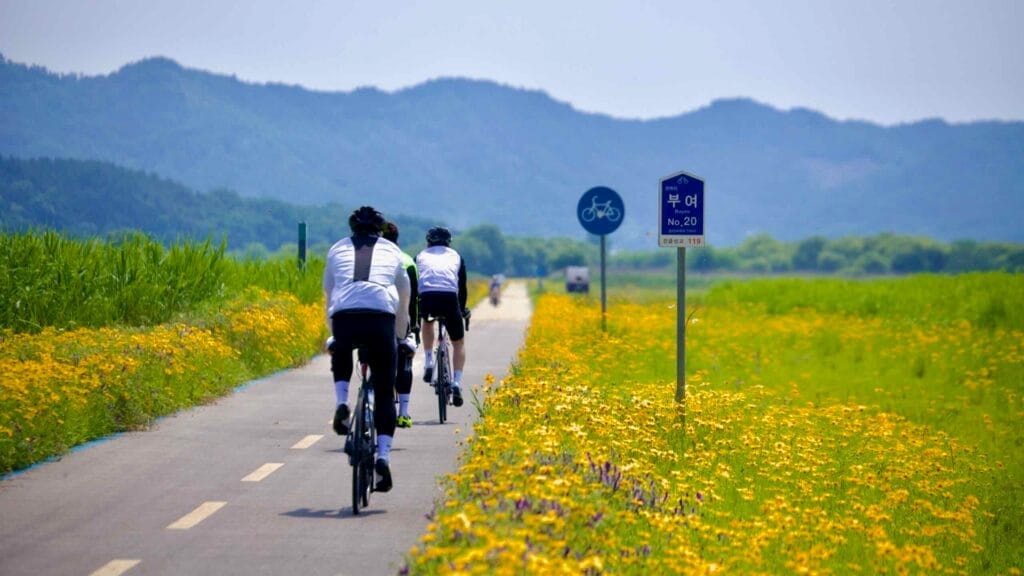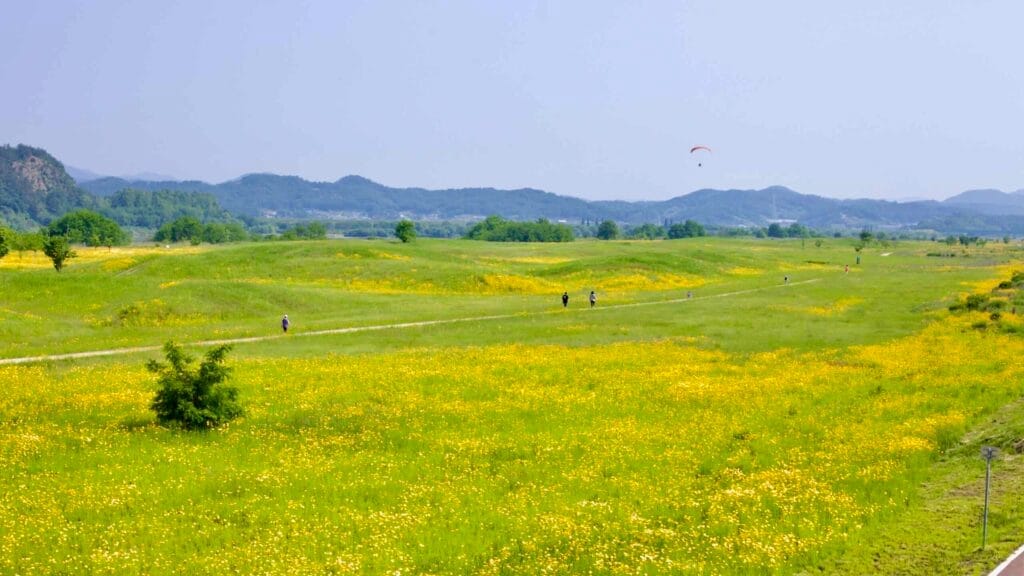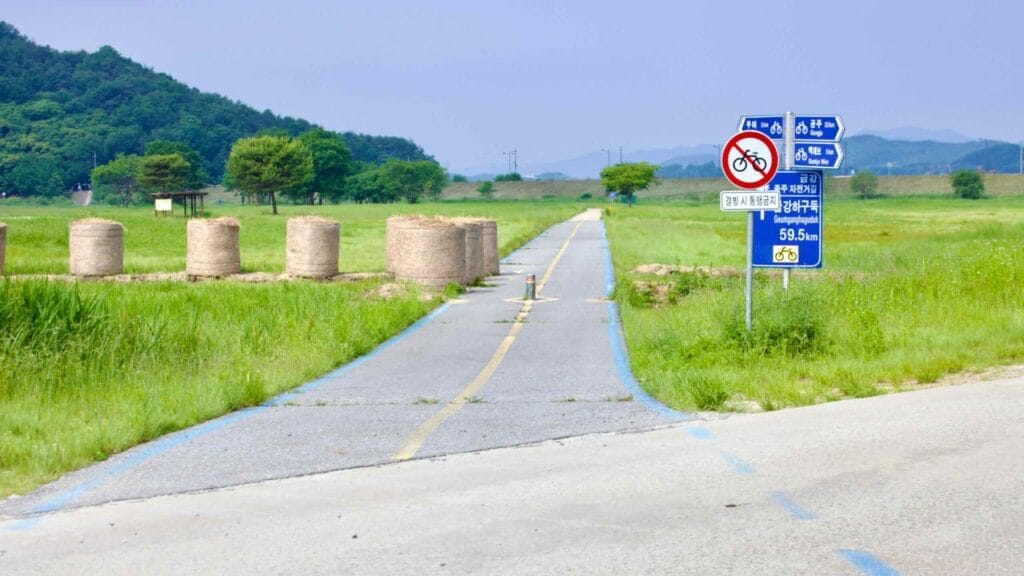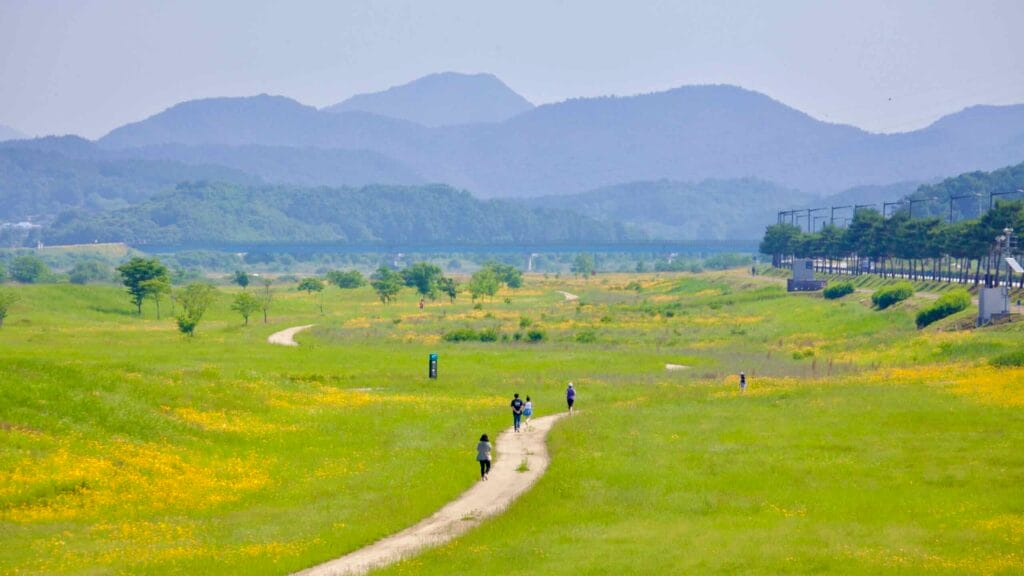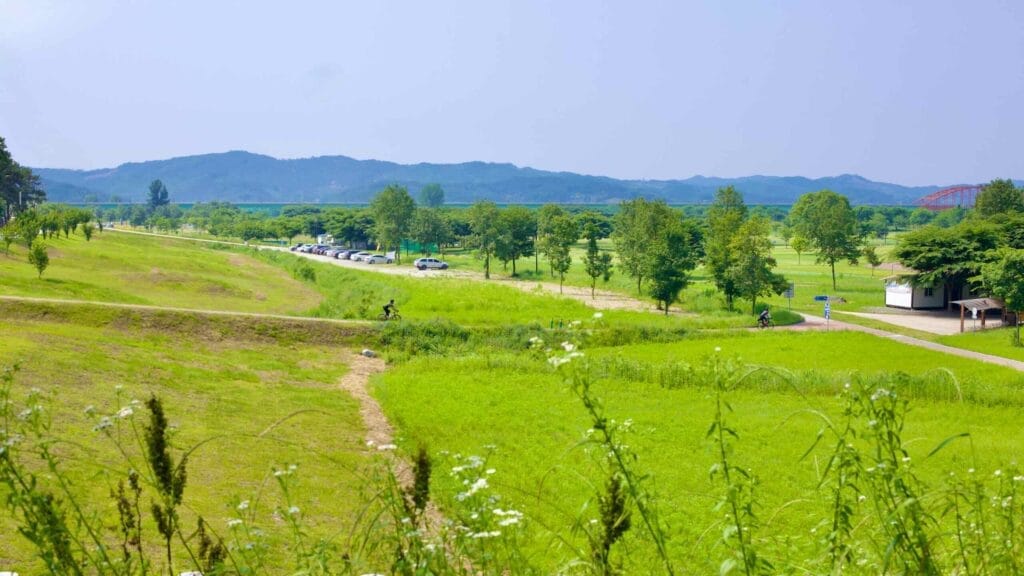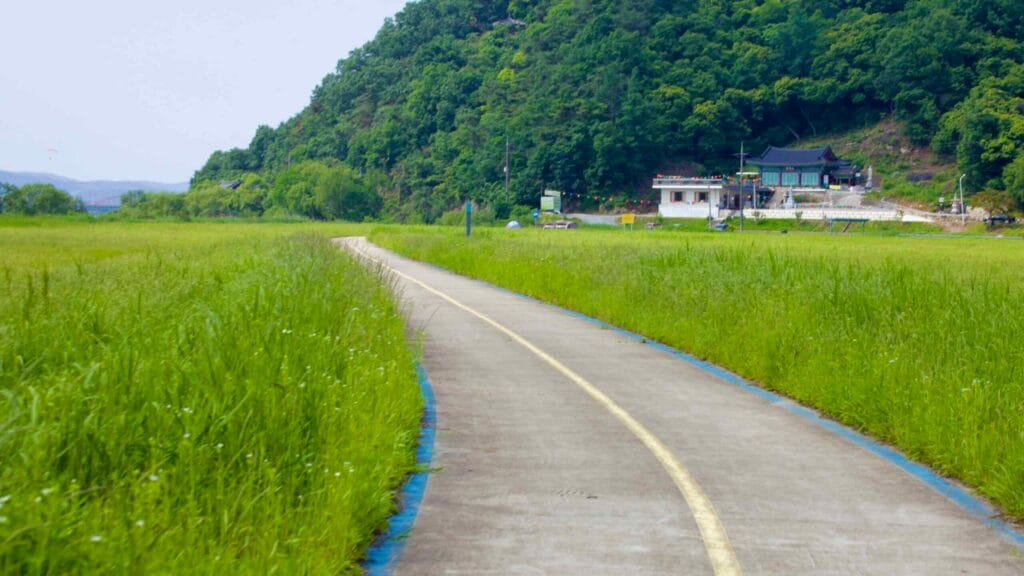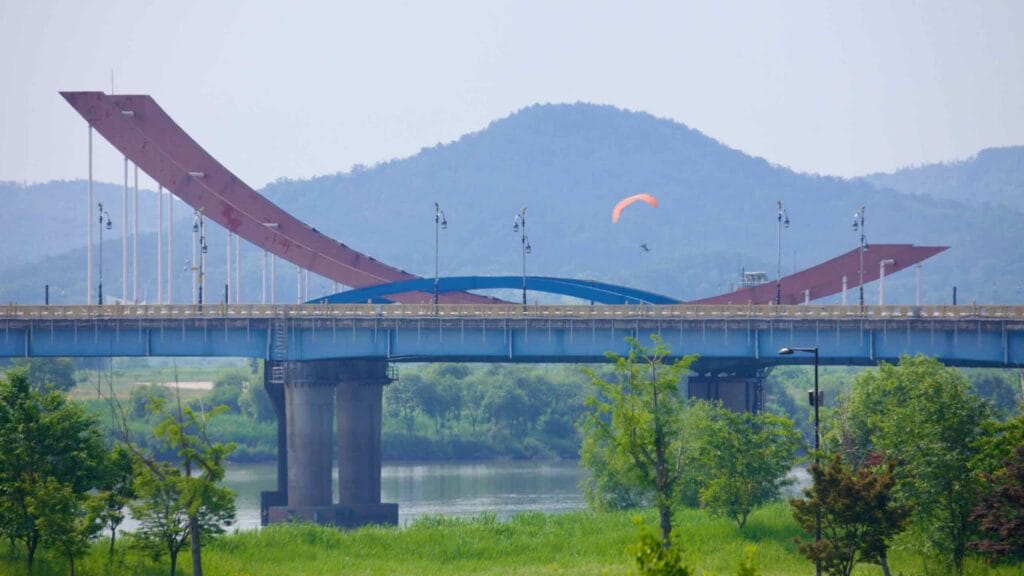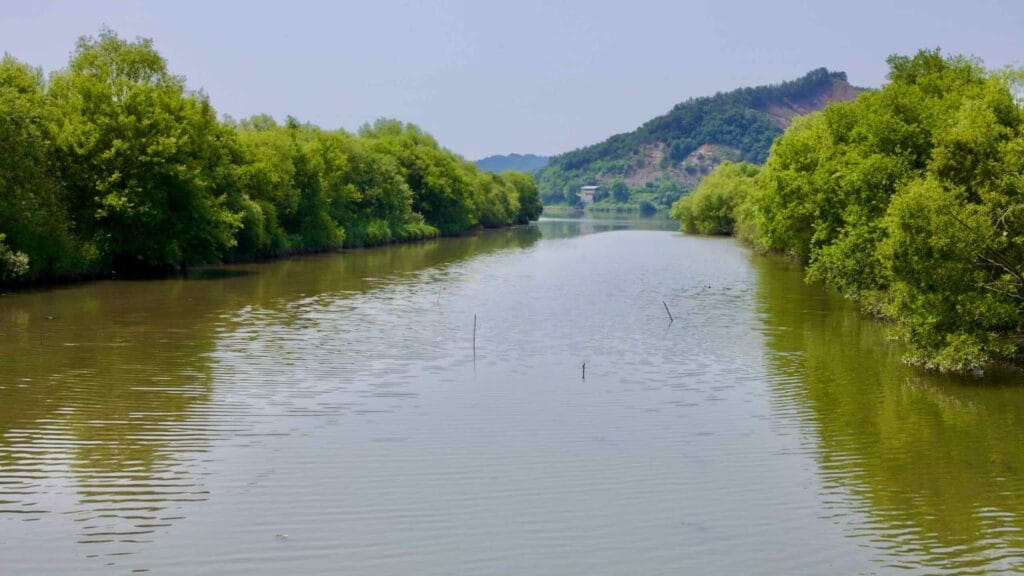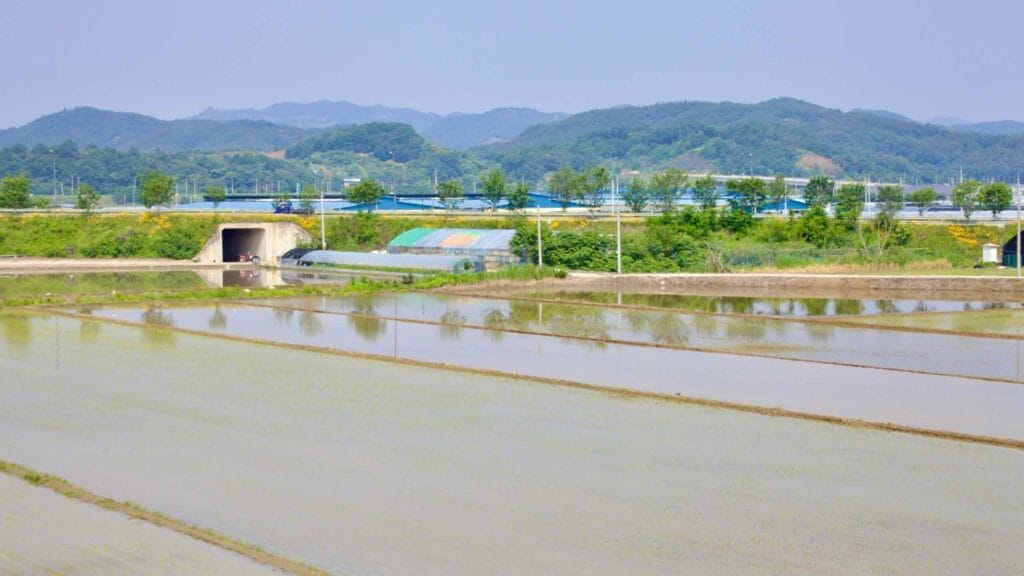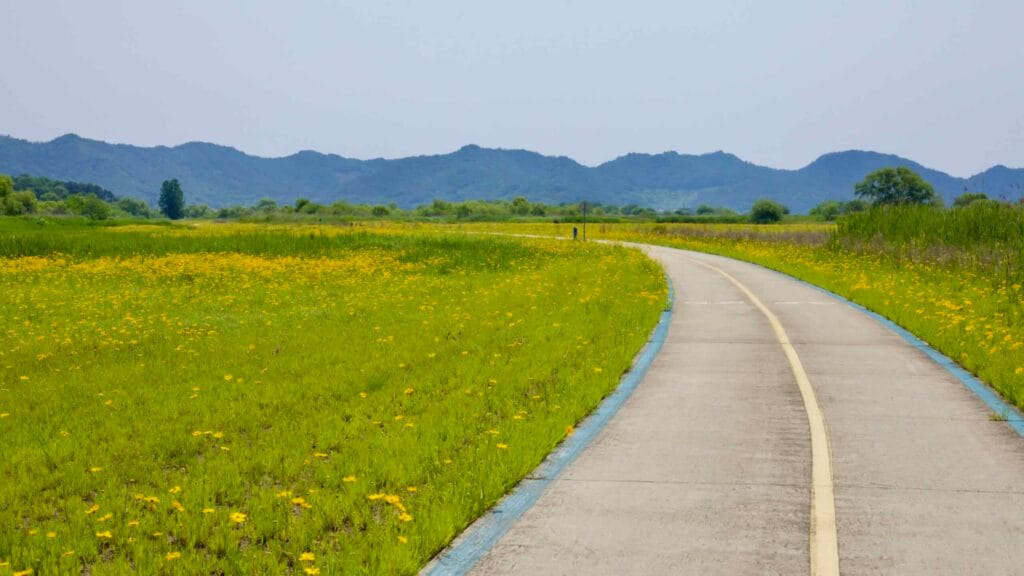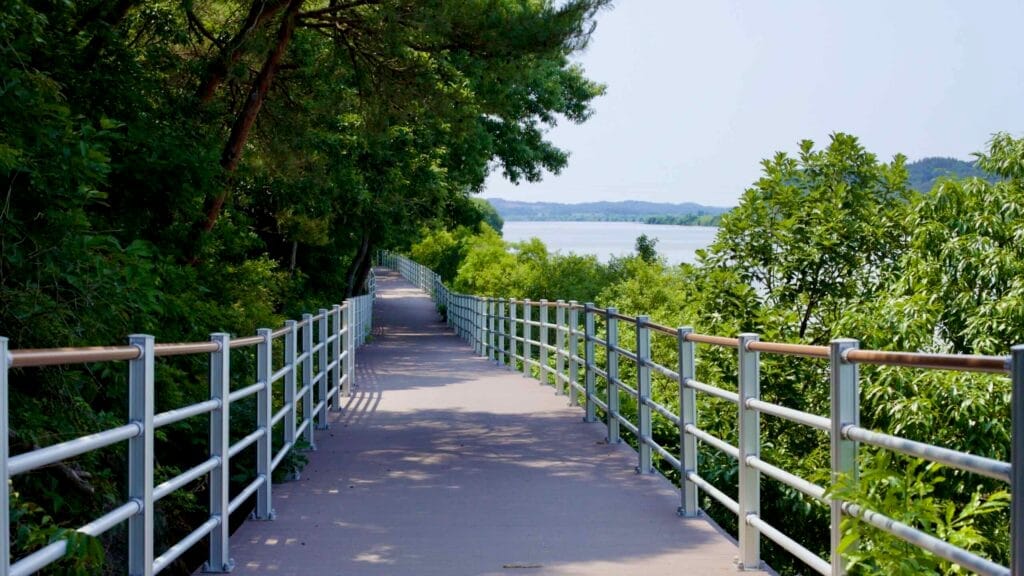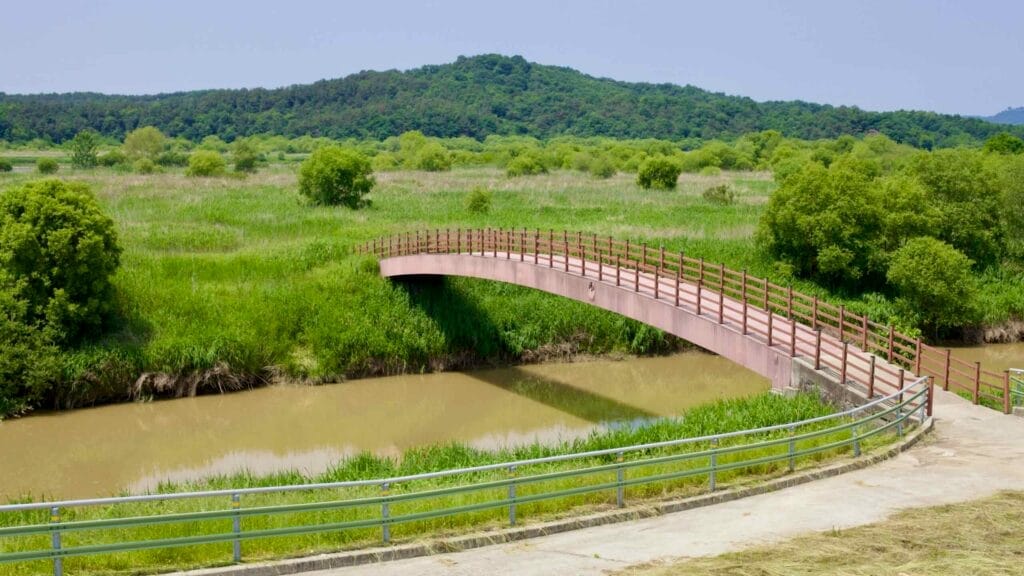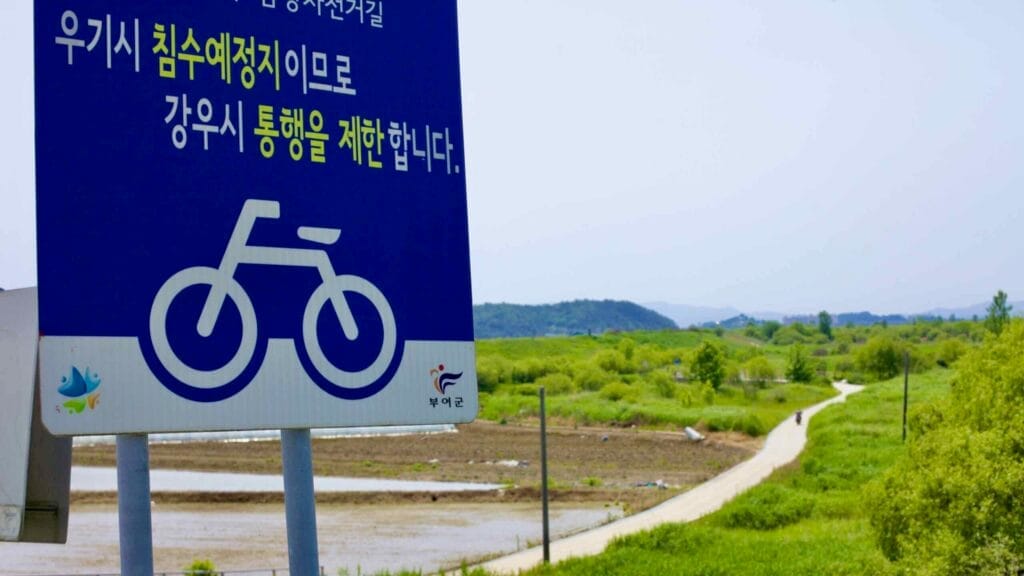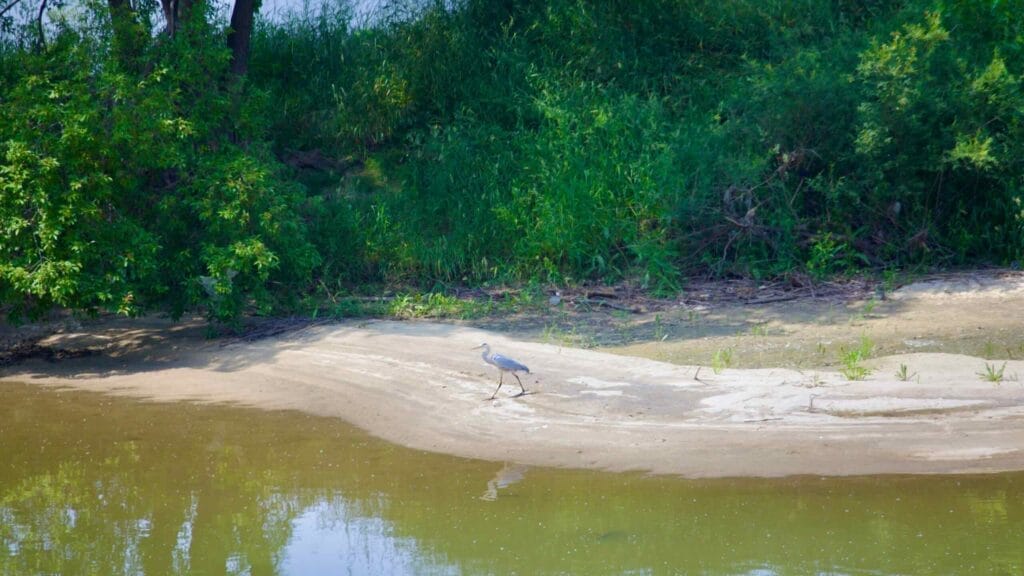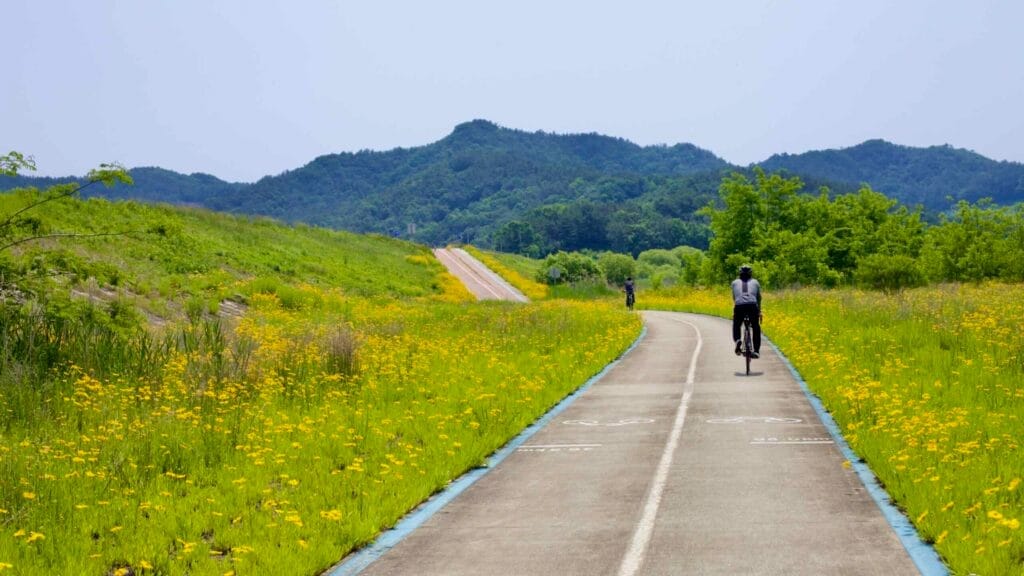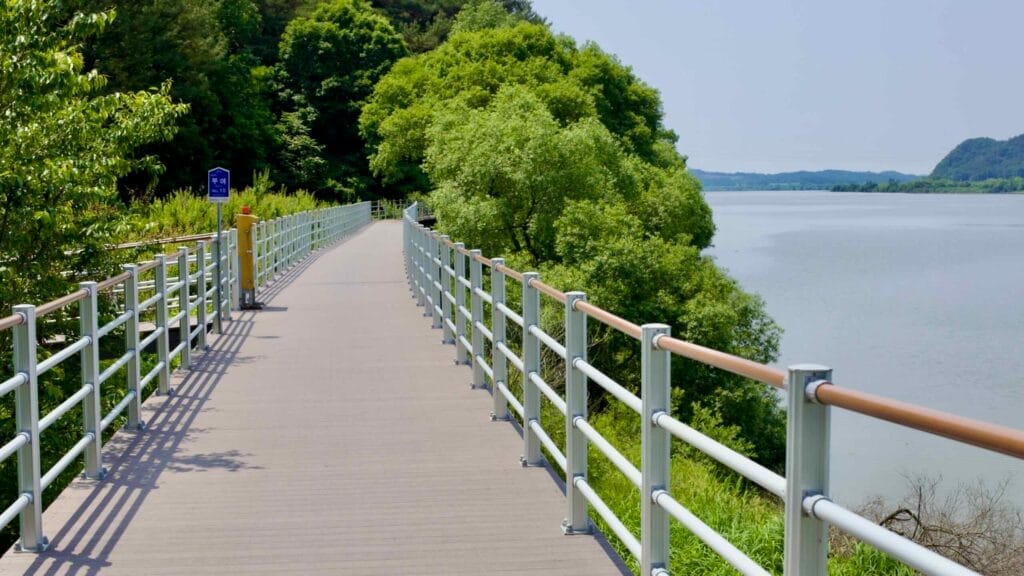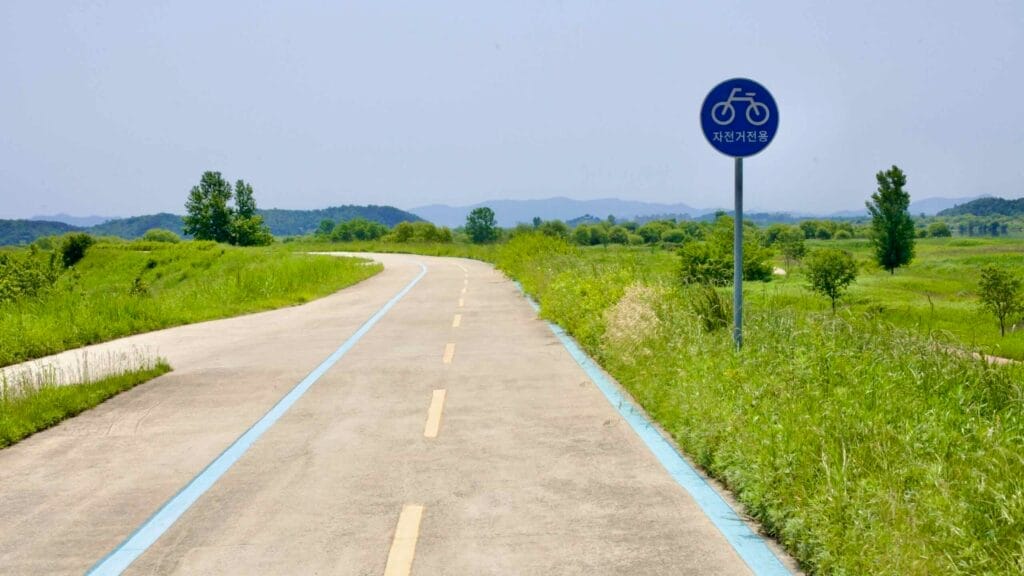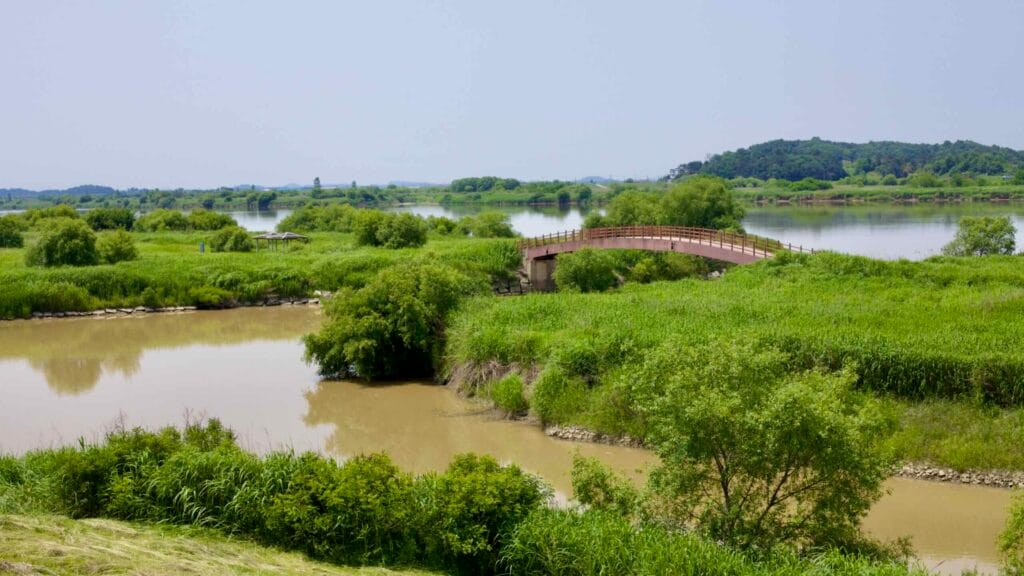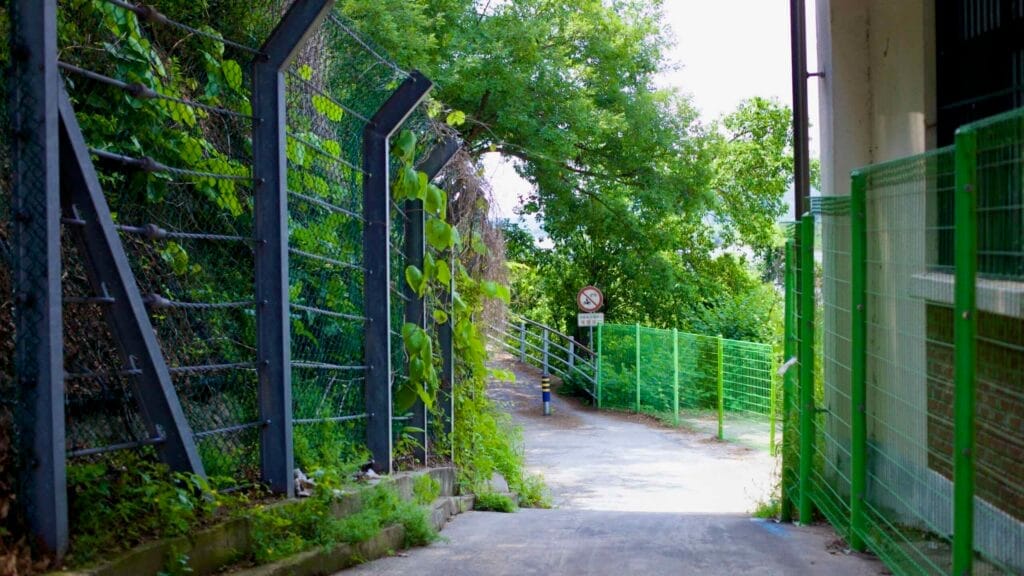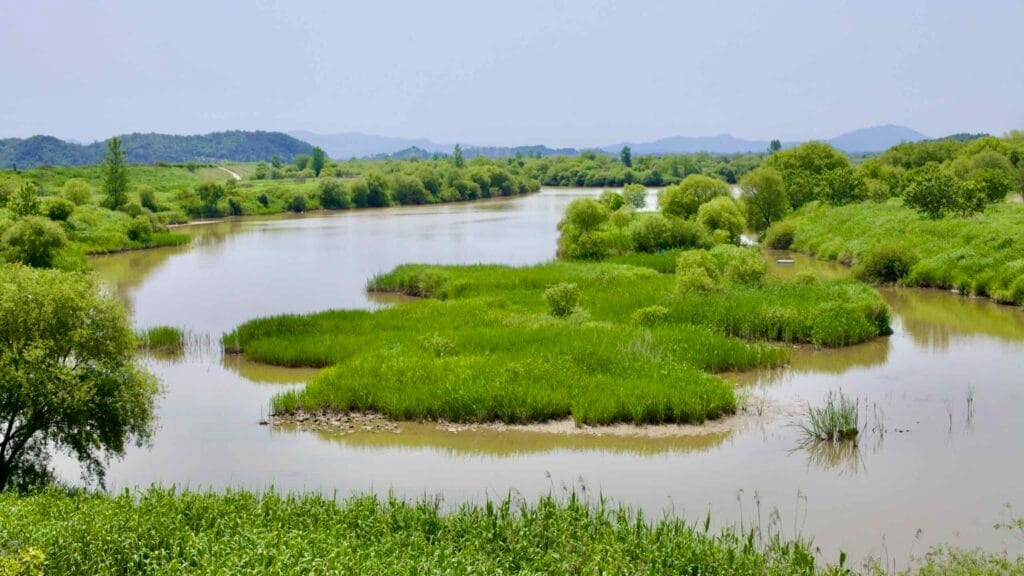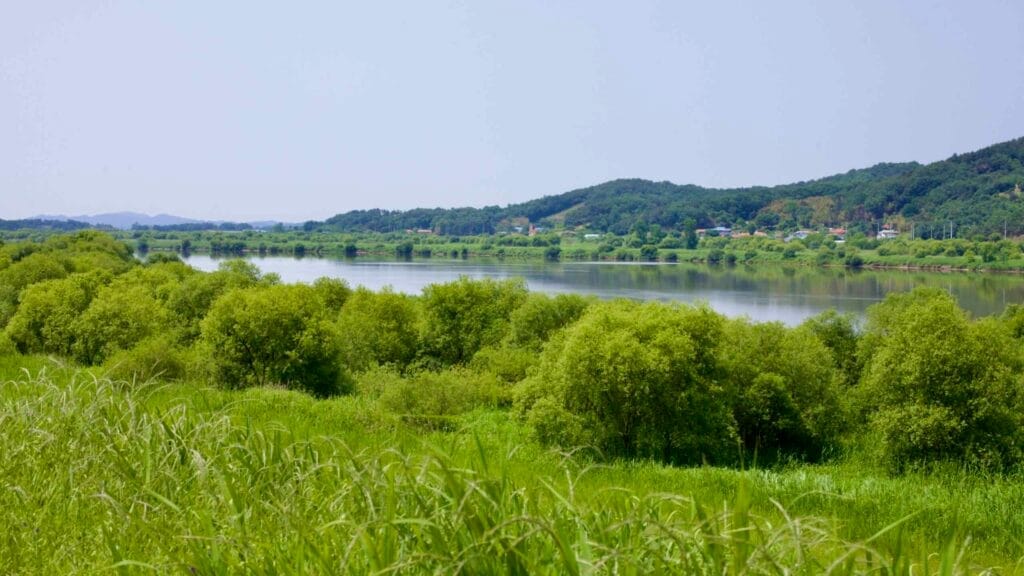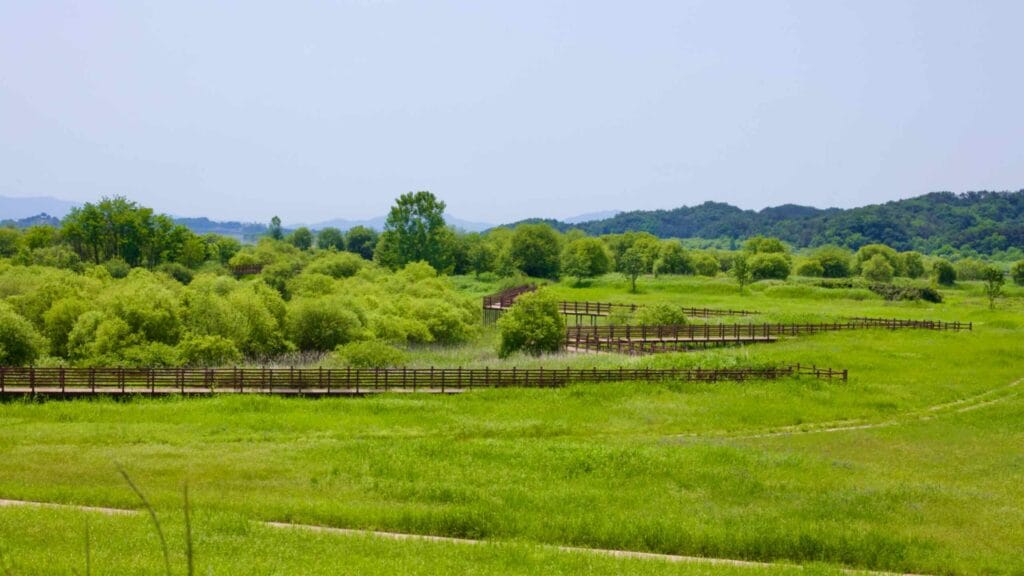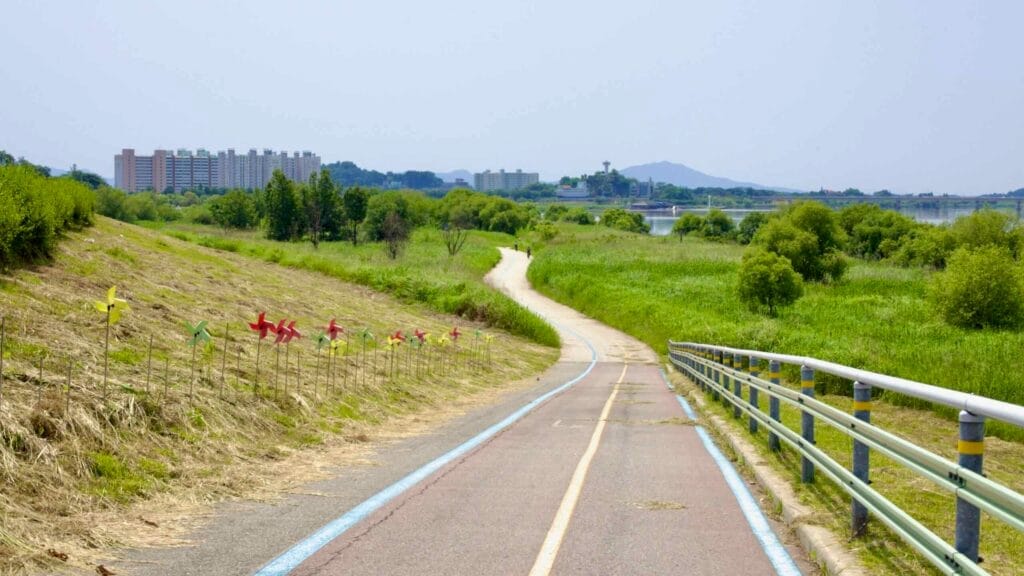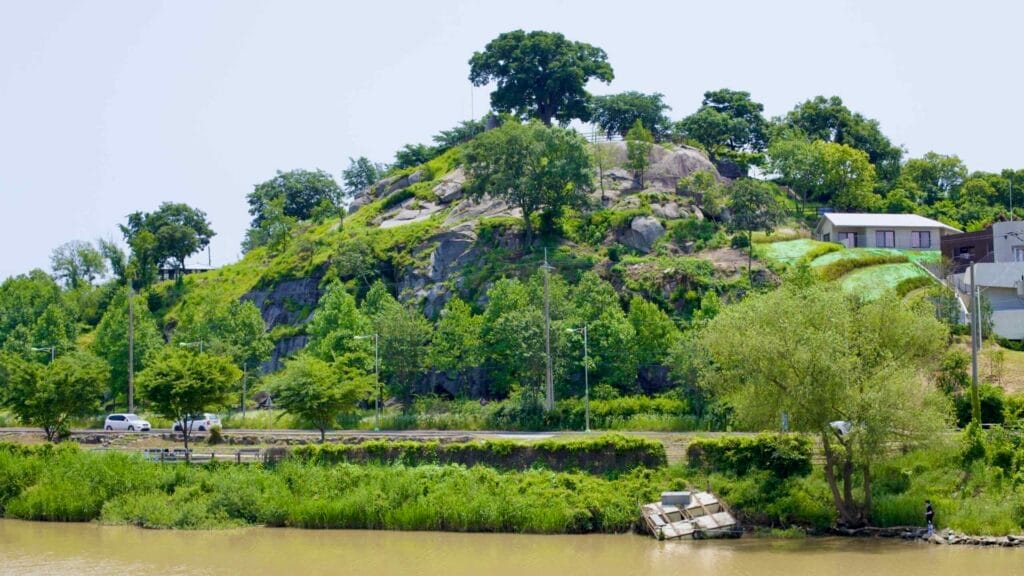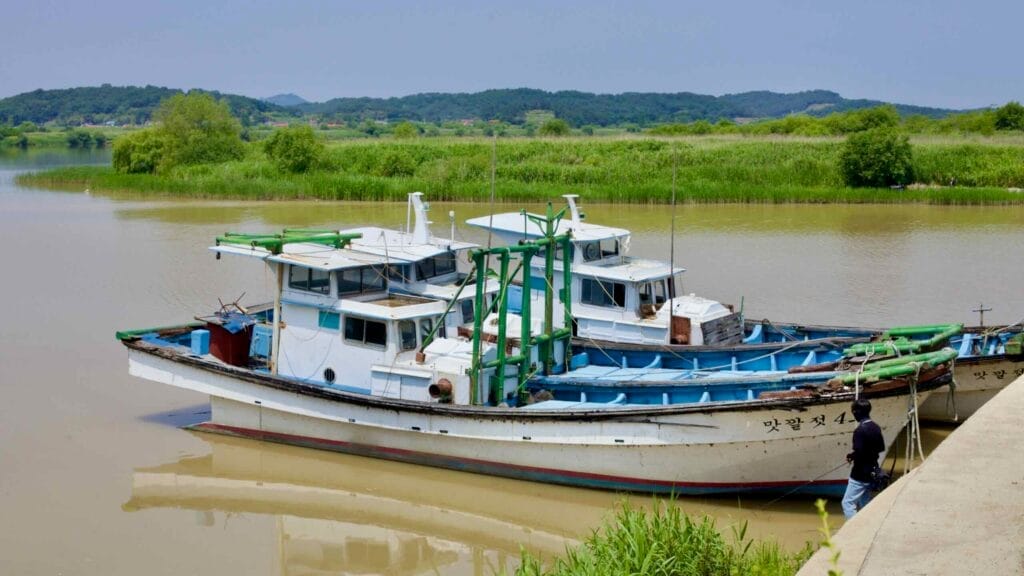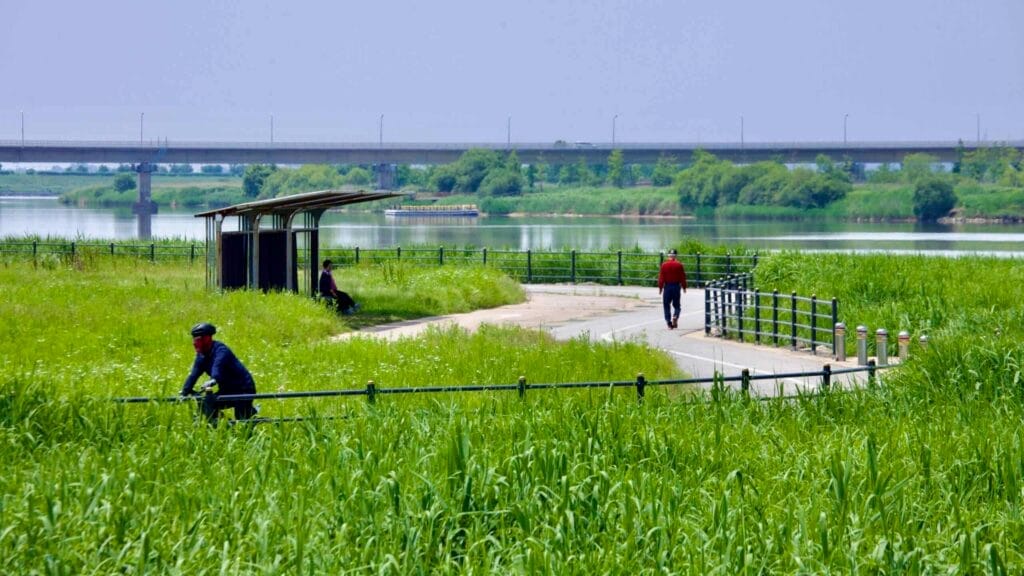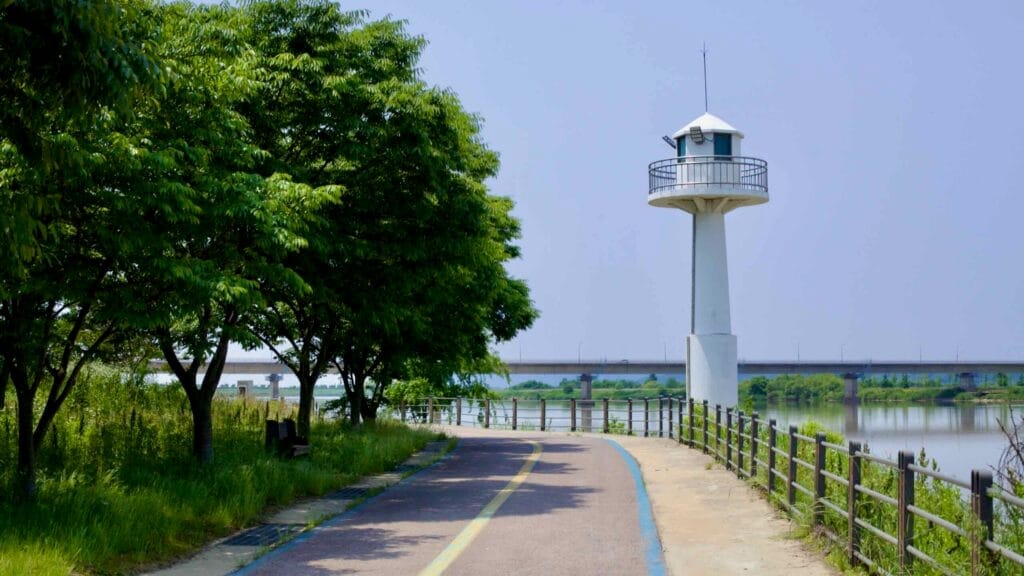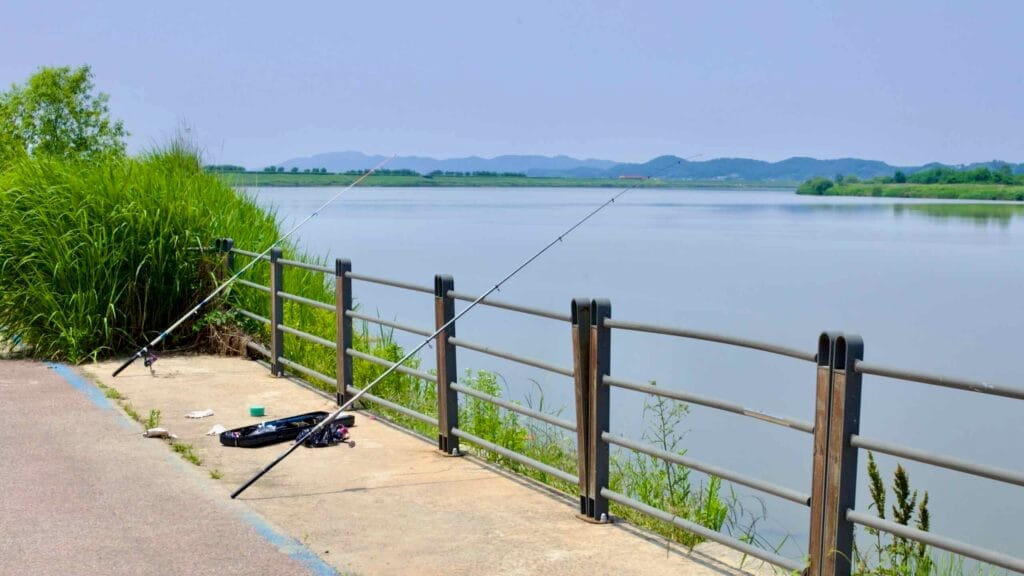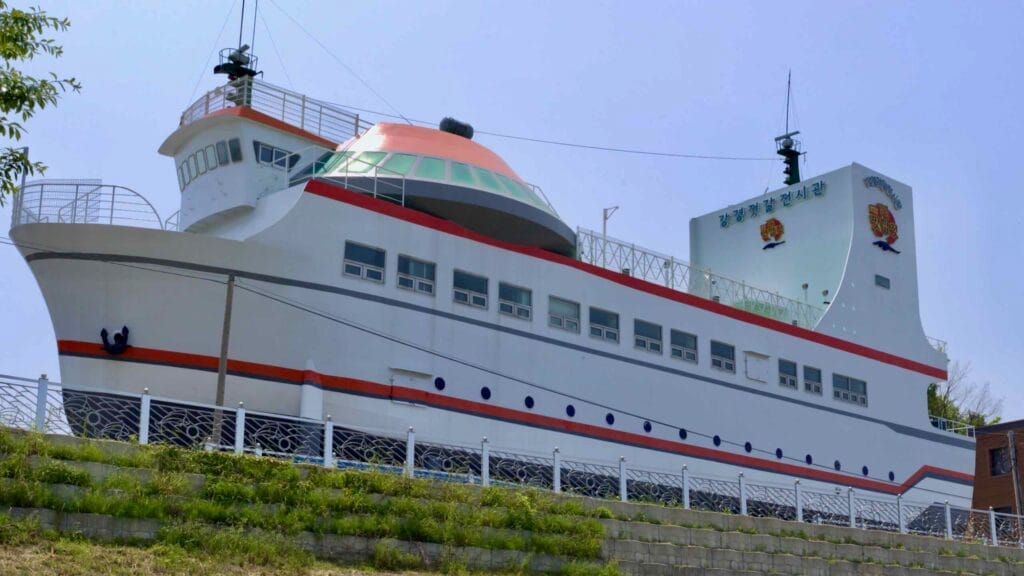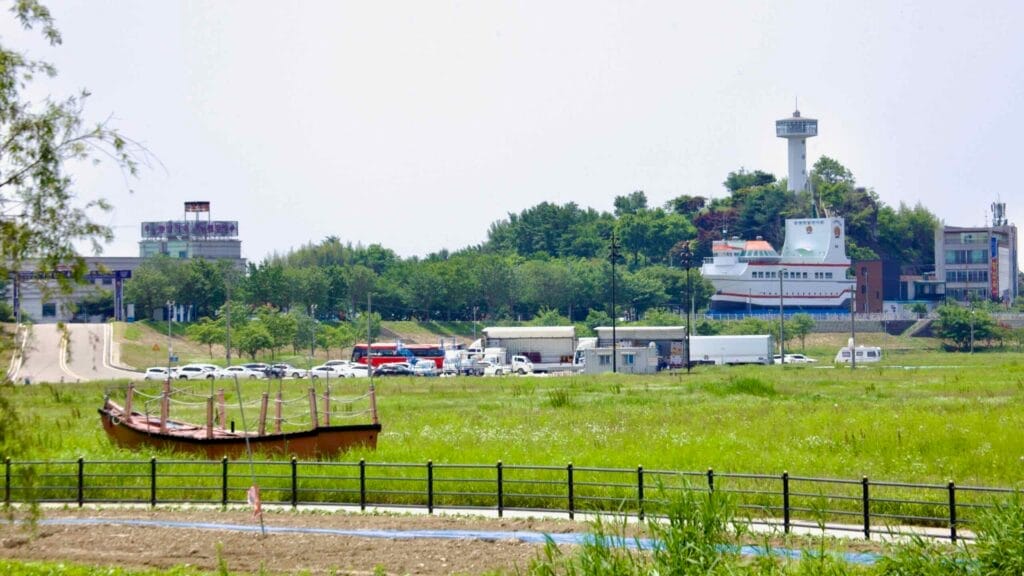
Bike Buyeo to Gunsan

The second section of the Geumgang Bike Path wanders from Buyeo County (부여군; map) to Gunsan City (군산시; map), which sits on the edge of the Yellow Sea (황해; map) on Korea’s west coast.
The course passes a historic theme park and a quaint port town fixed in time. The path’s end sits in a bird sanctuary near where the muddy mouth of the Geum River spills into the sea.

Downtown Buyeo to Ganggyeong Port
Follow the Geum River back into the countryside. Sail out of downtown Buyeo and into what was once one of Korea’s most prosperous inland ports.
- Ganggyeong Port
- Difficulty: 🚲🚲🚲
Rural Redux
Well rested? Stocked up on water and snacks? You’ll need it. From the moment you leave downtown Buyeo to your arrival in Ganggyeong Port 18 kilometers later, there are no convenience stores, restaurants, or accommodations.
Exit south from Baekje Bridge into Narae Park (나래공원; map), home to sweeping fields of silver reeds and pink cosmos in autumn. Follow the river for seven kilometers through more flower-filled fields until a pair of low peaks—Yongmeori (용머리산; map) and Pajin (파진산; map)—push the bike path closer to the water.
Cross boardwalks suspended above the Geum River, shaded beneath tree canopies (road view), and then continue along embankments that protect nearby farmland from seasonal floods.
Nonsan City
Cross Seokseong Stream (map) and enter Nonsan City (논산시; map), a region with deep historical roots. Once a Baekje trade outpost, Nonsan flourished during the Goryeo Dynasty when monks carved the 18-meter granite Buddha “Eunjin Mireuk” at Gwanchoksa Temple (관촉사; map).
Later, Confucian scholars built Donam Seowon (도남서원; map), now a UNESCO World Heritage Site. During the Joseon Dynasty, generals fortified the region with ramparts like Noseong Sanseong (노성산성; map). In modern times, Nonsan became a grain-and-salt hub and now houses Korea’s Army Training Center, where most of the nation’s recruits complete basic training.
Ganggyeong Port
At the end of the ride, cross Ganggyeong Bridge (강경대교; map) and enter Ganggyeong Port (강경포구; map). Once one of Korea’s busiest inland ports, Ganggyeong served as a key link between the west coast and interior. During the late Joseon Dynasty, it was one of Korea’s three largest markets, alongside Daegu and Pyeongyang, shipping rice, textiles, salt, seafood, and dried pollock.
At its peak, over 100 ships docked daily. Oknyeo Peak (옥녀봉; map), beside the bridge, marks the granite riverbanks that once secured its shipping empire.
The port’s decline began with the rise of rail: the Honam (1911) and Janghang (1931) lines rerouted traffic inland. Then, in 1990, the Geum River Estuary Dam (금강 하굿둑) cut off access to the sea.
Today, Ganggyeong thrives as a cultural site. It’s known for its Ganggyeong Salted Seafood Market (강경젓갈시장; map) and annual Salted Seafood Festival (강경 젓갈 축제), which celebrates its jeotgal (fermented seafood) legacy. Visitors can explore colonial-era remnants like the 1913 Hanil Bank building (한일은행 강경지점; map) and Korea’s first Baptist church (강경침례교회성지안내; map).
Ganggyeong Salted Seafood Exhibition Hall
Continue into a riverside park and spot the Ganggyeong Salted Seafood Exhibition Hall (강경젓갈전시관; map) on the high banks. Shaped like a four-story ship, it showcases the region’s fermented seafood (jeotgal; 젓갈) with exhibits, a hands-on kimchi-making area, and a rooftop observation deck.
Become a member or login to your account to read more!
Become a Korea by Bike member and get exclusive and ad-free content.
- Day-Trip Membership ($5) — three months of access.
- Touring Membership ($9) — six months of access.
- Endurance Membership ($20) — two years of access.
- Grand Slam Membership ($30) — lifetime access.
Subscribe for updates.
Day-Trip Membership — 3 months
Touring Membership — 6 months
Endurance Membership – 2 years
Grand Slam Membership — Lifetime
